It is a clear, sunny day in June 2022, and I am entering a conference room in the university building pulling a trolley piled high with boxes of lycra, water storage tanks, washing up bowls, paint brushes and six small, pack-away tents. As I assemble the tents, it becomes clear that the space is moving. The tents are light and trying to float above the air vents in the floor, but there is not enough room for them, or us, to dance. I respond by moving ALL the tables and chairs out to the sides of the room, disturbing the molecules and letting the air breathe. This might be an academic institution, but it is also a jumping off point for experimentation, improvisation and speculative inquiry. And that requires space for bodies as well as minds.
Entering the space are humans and nonhumans; skin, bone, gut, and blood intertwined with observation, anticipation, perspiration and curiosity. We have assembled here to think-with and move-with bodies without words. To experience embodied expression without verbalisation. Moving from thinking of silence as an empty void towards experiencing the plethora of languages, sounds, gestures, feelings and communications available when words do not dominate the space. This is the focus of my PhD research, entitled ‘Bodies of Difference: Can movement improvisation help us attune to the sensory expressions of young children who sometimes do not speak?’
We (academics, educators, artists and parents, objects, materials and movements) have gathered at Manchester Metropolitan University for a day of methodological exploration into the nature of Arts and Early Childhoods. Along with other WRDTP scholars, I have been invited to share some of my fieldwork and to trouble normative ideas about the importance of speaking, by experiencing through our bodies more of the ‘minor gestures’ of correspondence (Manning, 2016). My workshop challenges us all to consider whether (and, if so, how), we can develop pedagogies of body listening with children who may have received a diagnosis such as autism or selective mutism involving levels of anxiety so high as to prevent speaking, even though they have a great deal to say.
I invite delegates to focus on Shotter’s (2012) notion of creating spaces of ‘withness’ by relinquishing the ‘whatness’ of an event, i.e. not needing to know or understand but simply to experience and be in relation. We also work with Puig de la Bellacasa’s (2017) notion of the ‘skin as the site of possibility’ in which she explores Merleau-Ponty’s ‘reversibility’ of touch, i.e. who/what is touching whom/what, and what/where is the shared agency of sensorial exchange? We consider how the forces of touch and relation are at work on and in us (Barad, 2013), and how touch is a sensorial exchange in proportion to the changes of the molecular structure of sonic, visual, olfactory and haptic registers in the air around us. It is much bigger than our skin/nervous systems perceive.
Thinking-with these notions, we enact a ‘small dance’ of contact improvisation (Stark Smith, 2003) where, barely perceptible, we can sense the multitude of tiny movements happening within our bodies as we try to stand still. Bodies begin to experience the sensations from others, human and nonhuman, as they affect and are affected by each other; it is an attunement described by Ash and Gallacher as “the capacity to sense, amplify and attend to difference” (2015). We welcome an openness and enjoyment of body expression and body listening, including stimming, moving, contacting and playing with limbs, small dances or gestures, all without judgement.
Continuing without speaking, delegates are encouraged to experience a baptism of the senses using water, paint brushes and towels to enact care-full gestures with each other’s hands. Eventually, bodies are drawn towards, around and into the tents to experiment with more improvised touch exchanges using lycra, tent material, torch-lights, sounds and water, all the time investigating what is the minimum and maximum amount of touch the body can sense without words. As we investigate this unfamiliar terrain and use different senses to express and perceive, our bodies become moved, touched by, and more in touch with the world around us, leading to a space filled with many languages, soundscapes, silences, laughter, observations, wonderings and feelings.
After the workshop, there are many different responses to the small dance, the touch exchange and the use of objects as mediators. Delegates speak of the helpfulness of working with closed eyes to begin with, in order to resist self-judgement, comparison or fear of doing things the ‘wrong’ way. Some bodies experienced a resistance to (and others an absorption with) the intensity of finding the minimum and maximum amount of touch that one body could sense without being overwhelmed or bored. The minimum amount was said to be the sensation of a paintbrush softly stroking the hairs on an arm without touching the skin. The maximum amount was the sensation of listening to water droplets cascading onto the roof of the tent. In many cases, the touch could be felt and heard but not seen, augmenting the quality of attunement through the body and marking a radical departure from the ways in which the world is generally perceived in daily educational practice.
Many are delighted by the myriad of ‘minor gestures’ experienced, such as the forces of warmth and gravity felt through no-hands touch; the new dynamics of inquiry offered by tents, water, lights, and brushes; the unknowing of the space providing release from expectations (which children seem to lean into more easily); the new attunements to ones’ own body movements; the grounding nature of allowing own bodily movement without visual perception; the joy and laughter that emanated from the playfulness of this exercise. Delegates agree that this improvisational approach offers new possibilities for research and practice that might not have arisen had touch been explored in a blank space, through words and minds alone. There is a strong sense of the freedom of using arts-based methods without becoming an instrumentalised aspect of the curriculum, e.g. using dance to teach physical techniques, or using music to teach maths concepts. Instead, this space offers opportunities to radically immerse both body and mind in creative correspondences that give rise to a plethora of learning in the moment, learning through inclusive relationships and learning the complex patterns of expression, perception and reciprocity. Many delegates feel inspired to continue these body-listening approaches in their daily practice to see what might arise, especially for non-speakers.
Despite the innovative nature of this research, and my own background in dance and theatre, there are many practical applications for non arts-trained academics and educators who are open to exploring new possibilities with their students. I consider this bridge-building between theory and practice to be very important in order to resist the reductive tropes attached to children who do not speak or have a preference for learning, expressing and relating in more embodied, sensory ways.
This approach aims to decentre the child as being the one that needs to change, get fixed or somehow be better, which simply reinforces a colonialised set of normative standards as to who and how a child should be (Murris, 2016). Rather this approach acknowledges the constantly moving set of relations amongst human kind and nonhuman kind (in all their variations) in an entanglement of molecules called air, environment, childhood, gender, anxiety, sensation, joy, skin, texture, education, nervous systems, ethnicity and language (Barad, 2007). These (and many other) languages are just as important for us to learn, and the arts can offer fantastic co-produced processes for doing so without becoming overly skills-oriented or assessment-driven.
I am privileged to have explored arts-based training for many years through my organisation, Earlyarts, which supports early educators and arts organisations in working collaboratively and creatively. Through this I have been able to work alongside many theatres, museums, galleries, schools, nurseries and arts education bodies in organising training, consultancy, conferencing, book authoring and advisory work. However, most of this was sector-based and it was not until I began my WRDTP-funded PhD that I was able to delve into research and begin to ask some of the questions that professional work doesn’t allow the time or resources for. By networking with other PhD students in book groups, writing groups, online conferences, and webinars in the early childhood and arts fields, my understanding of the questions that could be asked and the methodologies for inquiry have been expanded enormously, as has my understanding of the tremendous research that has already taken place to move this thinking forward. Through my academic networks, and with the huge support of MMU, opportunities have now grown to include publishing my first two papers, speaking at the national conferences for the British Educational Research Association and the European Network of Qualitative Inquiry, running several workshops for sector-based groups in early education and the arts, as well as being invited to advise national bodies on developing their early years strategy. I cannot recommend the WRDTP pathways enough for building these sorts of opportunities to write, speak, network and connect with ideas and outcomes that will positively impact on our future professional careers, especially if we are open to explore them with all of our senses.
References:
Ash, J., & Gallacher, L. A. (2015). Becoming Attuned: Objects, Affects, and Embodied Methodology. In C. L. M. Mia Perry (Ed.), Methodologies of Embodiment (Vol. 1, pp. 69–85). Routledge. https://doi.org/https://doi.org/10.4324/9780203582190-5
Barad, K. (2007). Meeting the universe halfway: quantum physics and the entanglement of matter and meaning. Duke University Press. https://doi.org/https://doi.org/10.1215/9780822388128
Barad, K. (2013). On Touching–The Inhuman That Therefore I Am. Differences (Bloomington, Ind.), 23(3), 206-223. https://doi.org/10.1215/10407391-1892943
Manning, E. (2016). The minor gesture. Duke University Press.
Murris, K. (2016). The posthuman child: educational transformation through philosophy with picturebooks. Routledge. https://doi.org/10.4324/9781315718002
Puig de la Bellacasa, M. a. (2017). Matters of care: speculative ethics in more than human worlds (Vol. 41.;41;). University of Minnesota Press.
Shotter, J. (2012). More than Cool Reason: ‘Withness-thinking’ or ‘systemic thinking’ and ‘thinking about systems’. International Journal of Collaborative Practices(3(1)), 1-13. https://ijcp.files.wordpress.com/2012/06/shotter_final_english-cool-reason_new.pdf
Stark Smith, N. (2003). A Subjective History of Contact Improvisation. In A. Cooper Albright & D. Gere (Eds.), Taken by surprise : a dance improvisation reader (pp. xxi, 279 pages : illustrations ; 226 cm). Wesleyan University Press.













